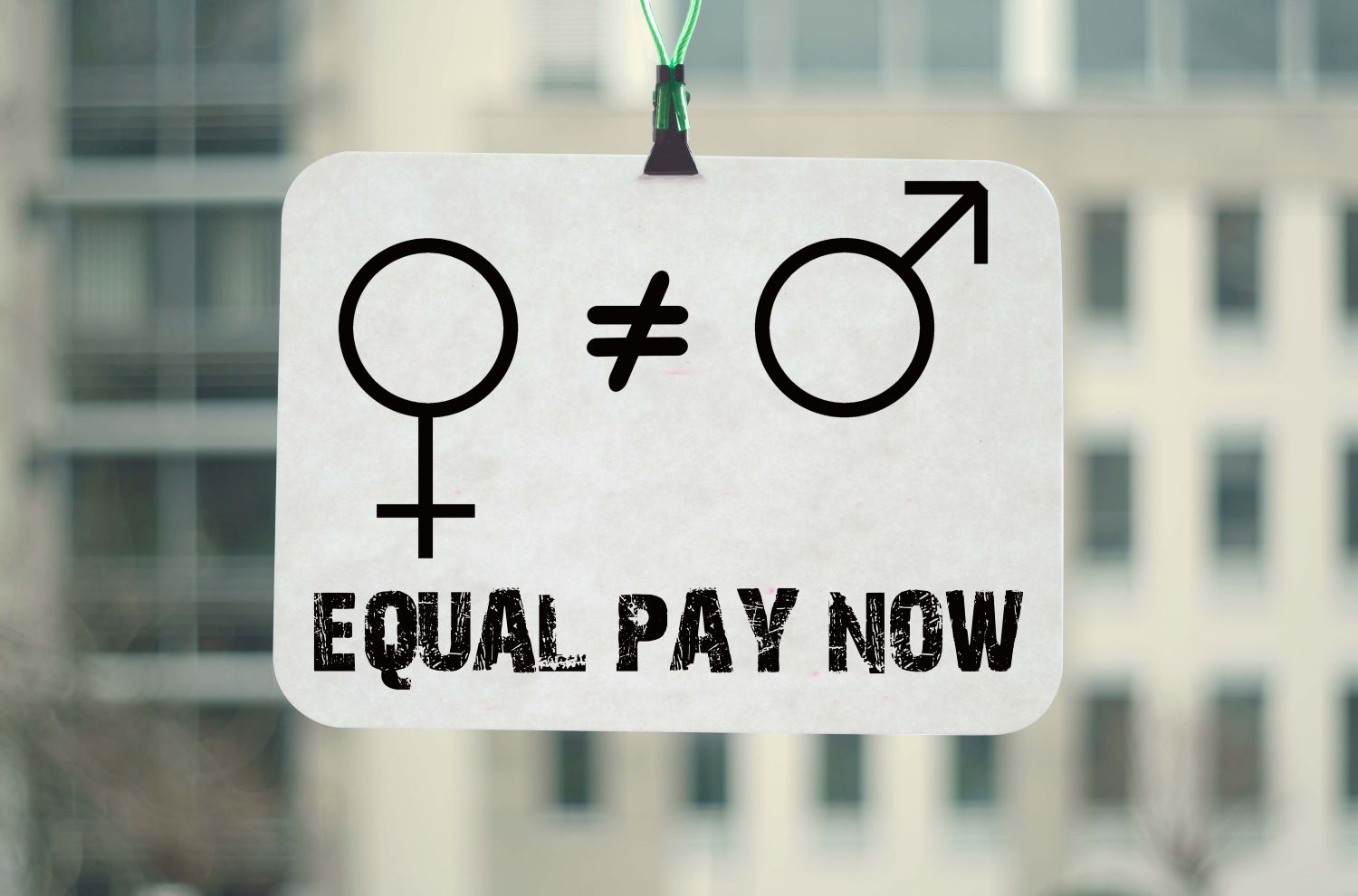Addressing gender pay disparity in the construction industry
The construction sector globally faces a persistent challenge in achieving equitable pay for its female workforce. Despite increasing recognition of the value of diversity, women in construction continue to be paid significantly less than their male counterparts. This disparity is not merely an issue of fairness - it represents a systemic inefficiency that hinders talent attraction, retention and overall industry progression. Thankfully, organisations like Procure Plus in the UK through its Women and Manual Trades (WaMT) programme, are actively working to address this issue, advocating for the closure of the pay gap and the creation of genuinely inclusive opportunities within the sector, writes John Ridgeway.
According to data from the Trades Union Congress (TUC), the enduring gender pay gap effectively means women perform unpaid work for a portion of each year. In the United Kingdom, recent figures indicate that women employed by the largest construction firms earn 23% less per hour than men. This figure has seen only a marginal reduction from 27% six years ago, underscoring the slow pace of change despite increased scrutiny and reporting requirements. This persistent gap highlights a deeper structural issue within an industry historically dominated by men, where established norms and practices continue to influence compensation structures.
One significant factor is the underrepresentation of women in higher-paying roles. While the number of women entering the construction industry has gradually increased, they remain disproportionately concentrated in administrative, support, or junior positions, which typically command lower salaries. Conversely, men predominantly occupy higher-paying roles in skilled trades, senior management and technical disciplines. This occupational segregation means that even if women are paid equally for the exact same job, the overall average pay for women will be lower due to their greater presence in less remunerated roles. Data from the UK consistently shows a lower percentage of women in the top pay quartiles within construction firms.
Another contributing element is the impact of career breaks and part-time work. Women are statistically more likely to take career breaks for childcare or other family responsibilities. When they return to the workforce, they may re-enter at a lower pay grade or be offered part-time roles that offer less hourly pay or fewer opportunities for progression. The construction industry, often characterised by demanding hours and a perceived lack of flexibility, has historically struggled to accommodate these needs, making it challenging for women to maintain continuous career progression that leads to higher earnings. While flexible working arrangements are becoming more common in some sectors, their widespread adoption and acceptance in construction, particularly for site-based or senior roles, remains an area for development.
Unconscious bias
Unconscious bias in recruitment, promotion, and compensation decisions also plays a role. Despite efforts to implement objective evaluation criteria, implicit biases can influence hiring managers and HR professionals. These biases might manifest in undervaluing women's experience or skills, offering lower starting salaries, or overlooking women for promotion opportunities, particularly into senior or leadership roles. A lack of transparency in salary structures across companies can further exacerbate this issue, making it difficult for employees to identify and challenge discrepancies.
Furthermore, sectoral stereotypes and cultural barriers have historically deterred women from pursuing construction careers, especially in manual trades. The perception of construction as a "masculine" environment can discourage women from entering or remaining in the industry, limiting the pipeline of female talent that could eventually progress into higher-paying positions. Workplace cultures that do not actively foster inclusivity can also contribute to higher attrition rates for women, particularly in the early stages of their careers.
The global context
The gender pay gap in construction is not unique to the United Kingdom - it is a pervasive global phenomenon, though its precise magnitude and contributing factors vary by region. In the United States, data consistently shows that women in construction earn less than their male counterparts. While the overall national gender pay gap for all industries may be narrower, the construction sector frequently reports one of the widest disparities. Similar to the UK, this is often attributed to the low representation of women in higher-paying craft roles and senior management, coupled with challenges related to workplace culture and career progression pathways. Initiatives aimed at increasing female participation in trades and leadership roles are active, but systemic change remains slow.
Across Europe, the gender pay gap varies significantly by country, but the construction sector generally exhibits a wider gap than the national average. In some Nordic countries, known for their strong gender equality policies, the construction pay gap may be narrower due to robust parental leave policies and a greater societal acceptance of flexible working. However, in Southern and Eastern European nations, deeper cultural barriers and less stringent enforcement of equal pay legislation can lead to more pronounced disparities. The European Union actively monitors gender pay gaps and promotes directives aimed at transparency and equal pay for equal work, but the construction industry often lags behind other sectors in compliance and actual implementation.
Asia and the Middle East
In Asia and the Middle East, the situation is often more pronounced. In many parts of Asia, women's participation in construction, especially in on-site or technical roles, is very low due to strong societal norms and traditional gender roles. Where women are employed, they are frequently in lower-paid, less skilled positions, leading to significant pay disparities. In some developing economies, female construction workers, particularly in manual labour, may face widespread sexism and substantial wage differentials compared to men performing equivalent work. Countries in the Middle East, while investing heavily in construction, also exhibit significant gender imbalances in the workforce, with women typically concentrated in administrative or design roles rather than direct construction site management or skilled trades.
Even in regions where women's overall labour force participation is high, the construction sector often remains an outlier, reflecting deeply ingrained industry structures and perceptions. The global trend suggests that while progress is being made in terms of women's overall presence in the industry, translating that presence into equitable pay and progression at all levels remains a significant challenge.
Recognising the urgency of this issue, Procure Plus, a UK based not-for-profit company, has consistently championed access to training and employment for underrepresented groups, including women, through targeted social value initiatives. The Women and Manual Trades (WaMT) programme is a cornerstone of this commitment. WaMT operates with the explicit objective of increasing the representation of women in construction trades and supporting their career development, thereby directly addressing the factors contributing to the gender pay gap.

The WaMT programme's initiatives are designed to dismantle existing barriers to entry and progression for women in construction. This includes providing access to tailored training pathways that equip women with the practical skills required for manual trades, often in partnership with colleges and training providers. These programmes can range from basic introductory courses to more advanced qualifications in areas like bricklaying, plumbing, electrical work and joinery. Critically, WaMT also focuses on facilitating meaningful employment opportunities, collaborating with a network of construction industry employers and trade bodies to secure placements and apprenticeships. This involves not only job matching, but also preparing women for interviews and providing guidance on navigating the industry.
In addition to training and employment, WaMT addresses practical barriers by assisting with the provision of appropriate personal protective equipment (PPE) and toolkits, often designed for male body types, which can be a significant comfort and safety issue for women. The programme also provides access to supportive networks and mentorship opportunities, connecting women with experienced tradeswomen and industry professionals. These networks offer invaluable advice, peer support, and a sense of community, helping to counter the isolation sometimes experienced in male-dominated environments. Career guidance provided by WaMT extends beyond initial placement, focusing on long-term career development and progression within the sector.
Procure Plus's broader social value initiatives, of which WaMT is a part, demonstrate a commitment to systemic change. By leveraging its procurement power, Procure Plus encourages its contractor clients to embed diversity and inclusion into their own recruitment and HR practices. This includes advocating for clear salary bands, transparent promotion criteria and flexible working policies that support a more equitable work-life balance for all employees. The objective is to foster workplace cultures where women feel valued, supported and confident in their ability to progress into higher-paying roles, ultimately contributing to a more balanced pay structure across the industry.
Closing the gender pay gap in construction is not merely a matter of social justice; it is an economic imperative. A more diverse and inclusive workforce, where all employees are compensated fairly, leads to increased productivity, enhanced innovation and a stronger talent pool capable of addressing the industry's significant skills shortages. The work of organisations like Procure Plus and its WaMT programme is vital in driving this necessary transformation, moving the construction sector towards a future of true equity and opportunity for all.
Additional Blogs

Construction’s obsession with blame instead of learning
Construction is one of the most technically advanced industries in the built environment, yet culturally it often behaves like one of the least reflective. When things go wrong and they frequently...
Read moreHow risk Is routinely pushed down the supply chain
Risk is an unavoidable part of construction. Every project involves uncertainty around ground conditions, weather, design coordination, procurement, labour and programme. Yet while risk is inherent,...
Read more

What if Building Control went fully digital?
Building control governs structural integrity, fire protection, energy efficiency, accessibility and countless other aspects of design and construction. Historically, this process has been highly...
Read more